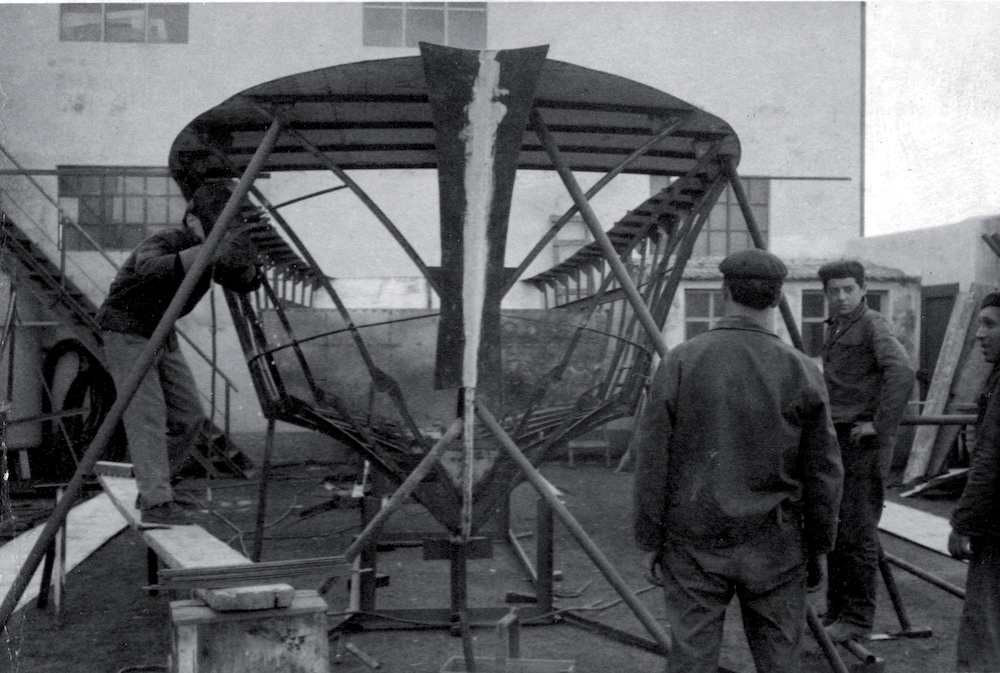Since beginning operations in 1963 CRN has made the cutting-edge its underlying philosophy. The founder Sanzio Nicolini was a great yacht enthusiast and visionary entrepreneur, one of those men with a talent for anticipating and creating trends. He was the first to use metal construction, moving on from fishing boats to fast personnel transport craft and then pleasure yachts. (Here all our posts about CRN)
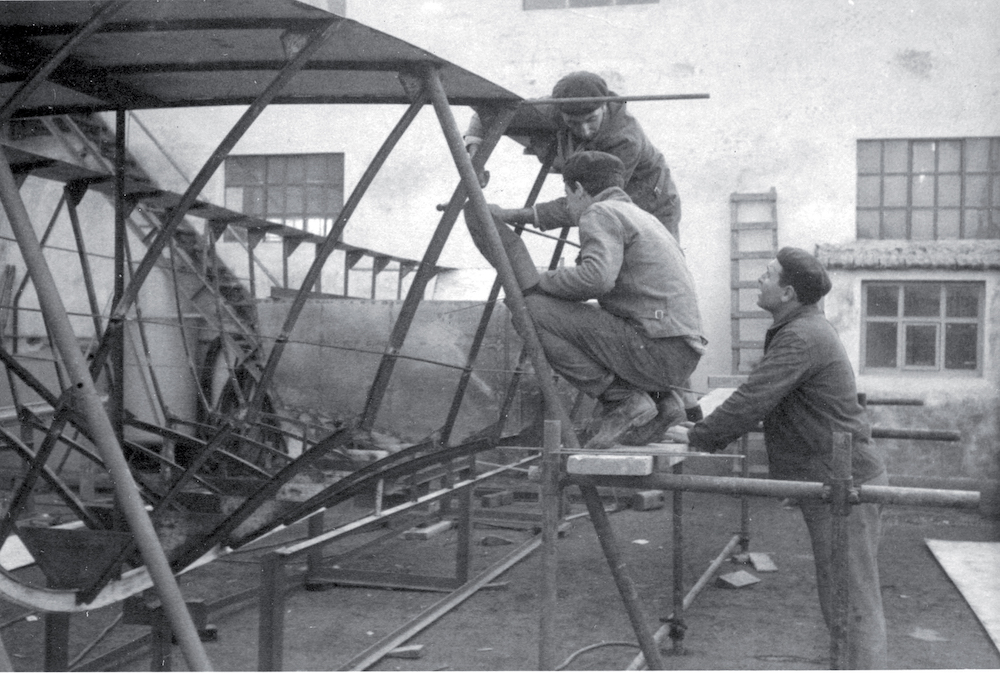
The yard is based in Ancona, a strategically-located maritime hub and the cradle of a naval tradition that means the yard can always draw on a highly-skilled workforce. Thanks to these advantages CRN soon became a go-to location for the European pleasure sailing market. Its success was also driven by strategic collaborations, further evidence of Nicolini’s far-sightedness and business acumen.
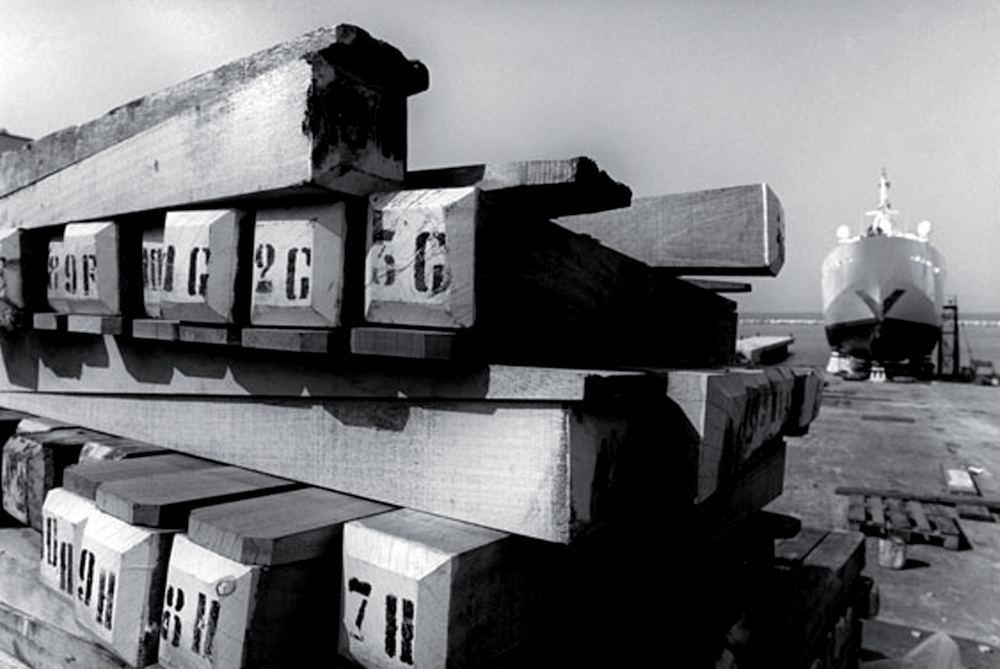
But CRN was also the first brand to make bespoke yachts, craft that reflect the owner’s specifications – take, for example, Numptia and its rounded stern or Gianni Agnelli’s F100. Now the journey taken by an owner begins with a blank sheet, with the yard starting the production process by listening carefully to the owner and forming a clear picture of what he or she wants from their yacht. A general plan is then drawn up, and this became the starting point for work on the project, with elements defined and reshaped until the owner’s requests were made real.
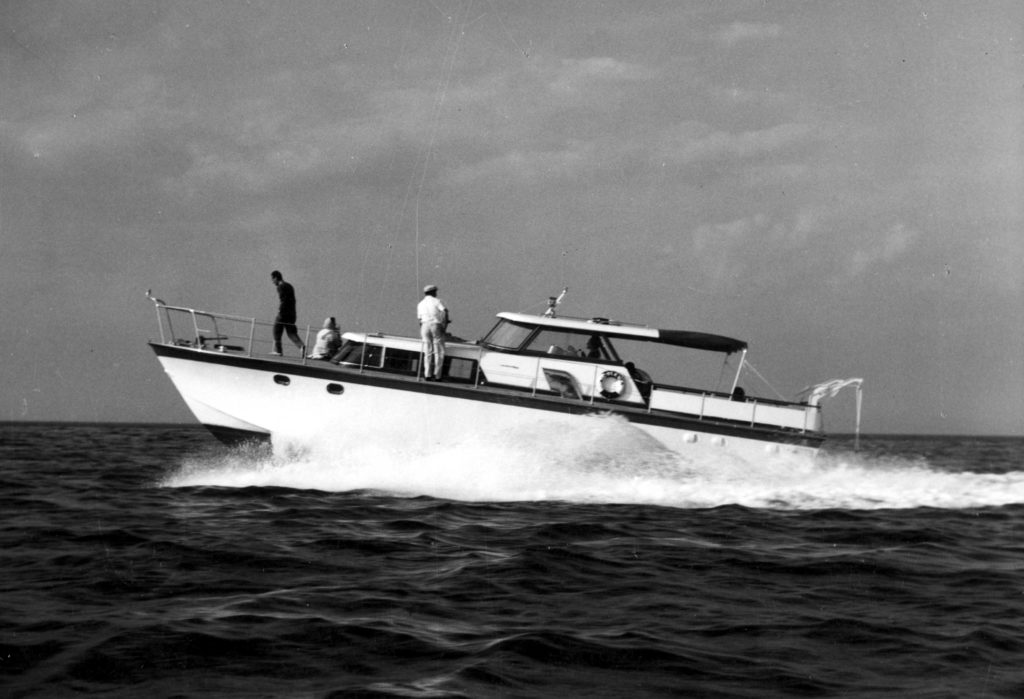
Another of the yard’s strengths is its commitment to minimising the environmental impact of its yachts and production processes – in 2021 it launched an initiative that led to the publication of the Ferretti Group’s first Sustainability Report, a totally new development in the Italian yacht-building industry. Now CRN has become the Ferretti Group Superyacht Yard, which covers 80,000 square metres and can handle the construction of yachts up to 90 metres in length. The crew building was recently refurbished and in 2023 the new office building on via Enrico Mattei will soon be completed. The centre for owners will be opened in 2024.
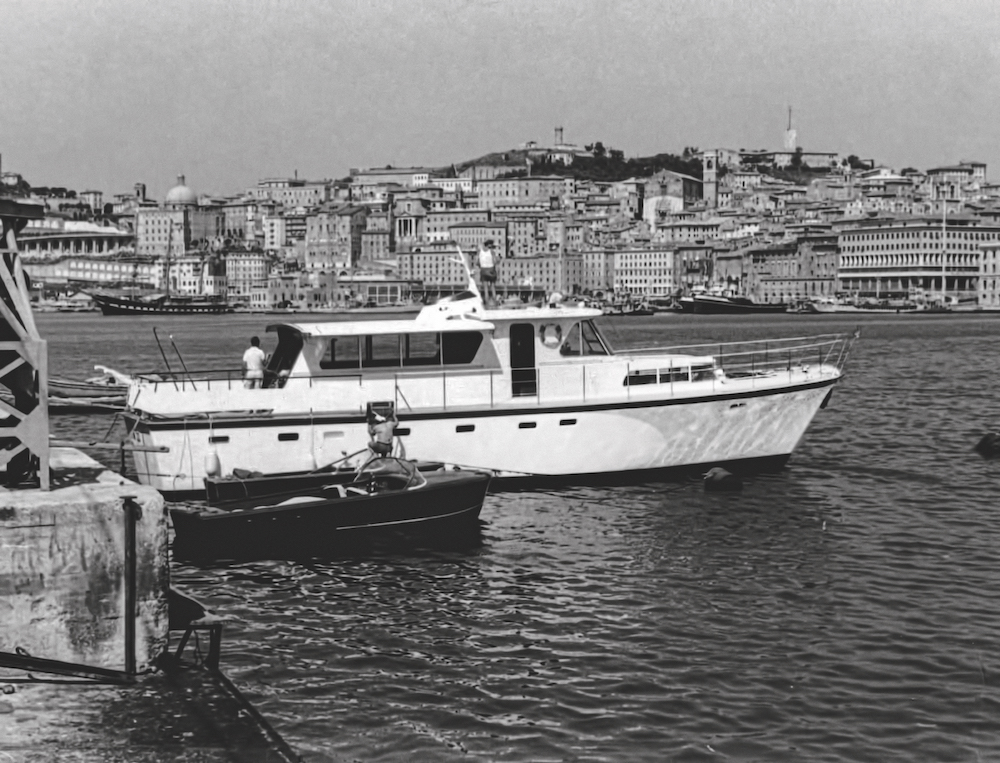
CRN 1963 – 1972
When CRN was founded in 1963 Sanzio Nicolini began constructing steel and alumnium craft. This was a time when wood was the dominant material and metal builds were much less common. He achieved immediate success, especially among a demanding client base in Italy, the Middle East, the Cote d’Azur and Greece.
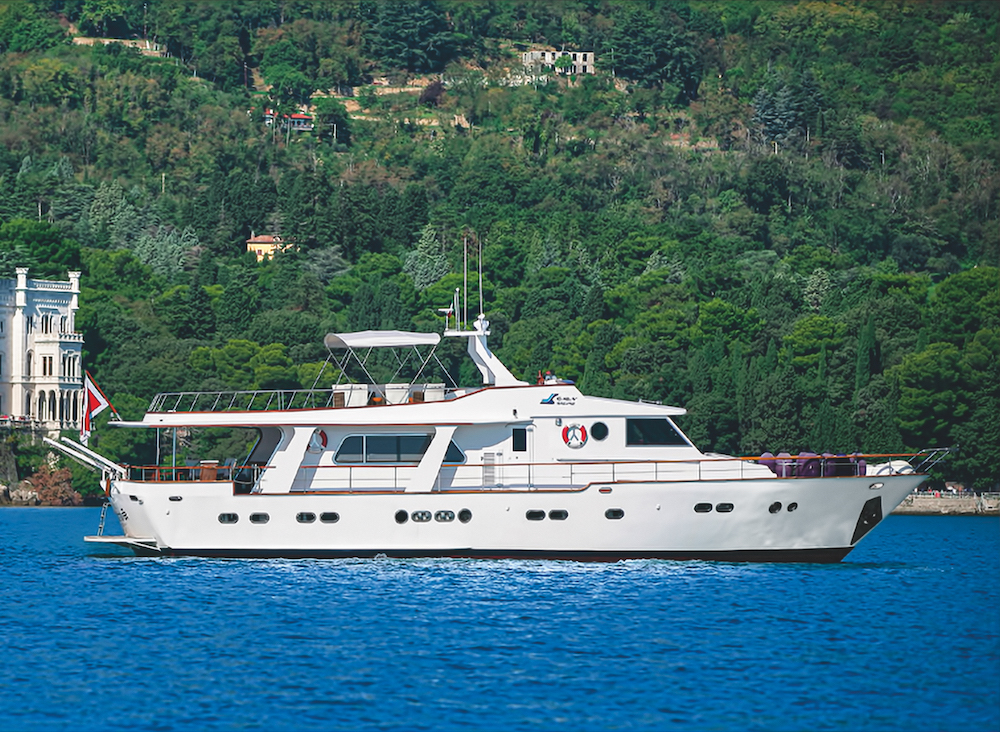
In the space of five years the yard’s yachts grew in length from 14 to 38 metres, and 1967 saw the launch of the first SuperConero, a 23-metre model with iconic, immediately recognisable lines. It was to mark a turning point in international yacht design and become a benchmark for yachts to come, even inspiring the 50-metre Latona, launched in 2018.
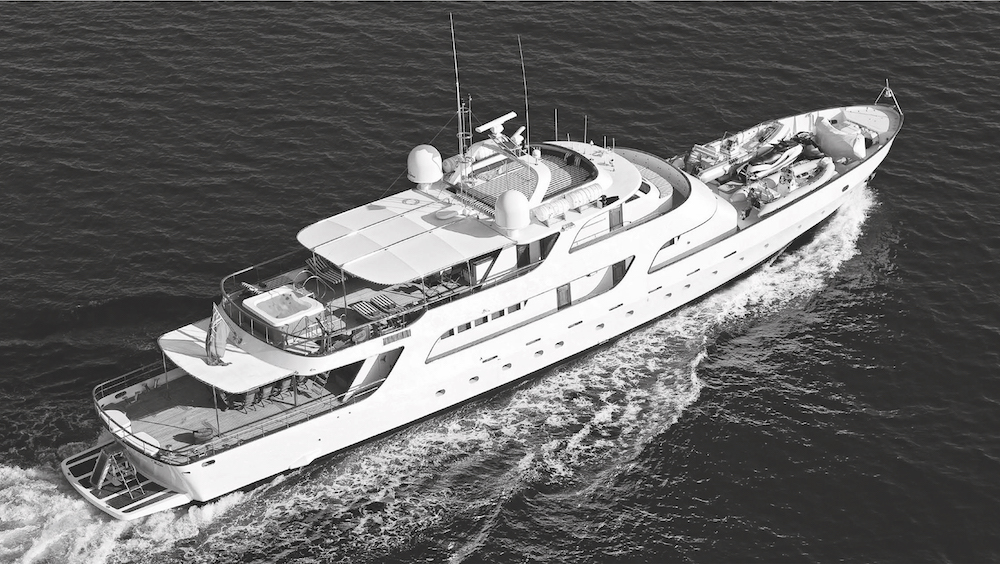
During a period of economic growth and when companies were often family-run or had a rather ad-hoc management set-up, CRN’s corporate structure was well ahead of its time. Responsibilities and procedures were strictly codified and integrated. The technical office worked in tandem with the fitting out department and the drawing office, where technicians produced full-scale drawings of the entire yacht, as well as the workshop where the pieces were prepared and cut out.
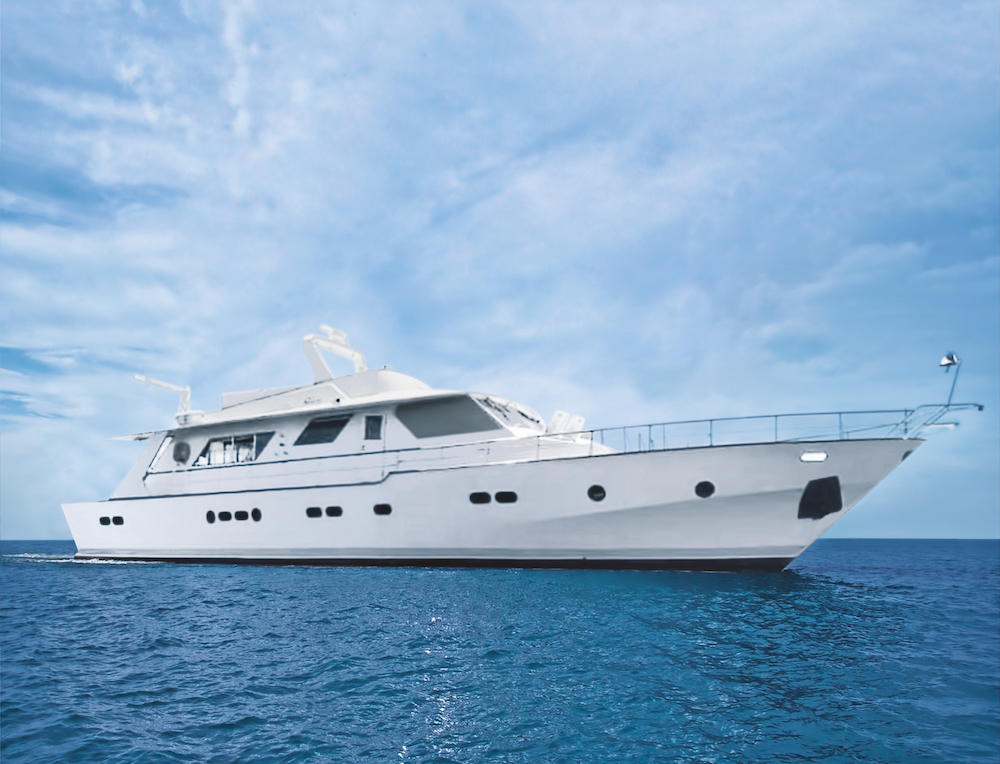
Then there were the mechanics and engineers who handled the engine parts, the fitters who did all the hydraulic pipe work and finally the joiners who saw to all the exterior fittings and decks, which were positioned strip by strip using 5 cm teak laths that had to flex to match the yacht’s movements. This took many days of work.
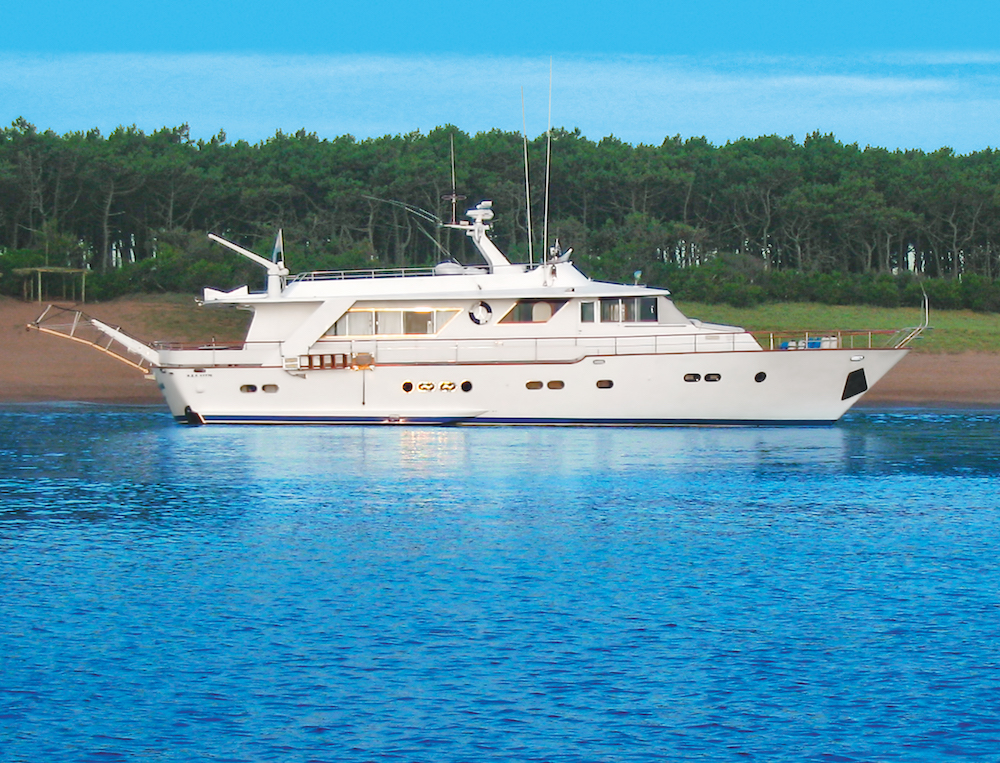
The team was completed by cabinetmakers, carpenters and specialist workers who created and fitted out the interiors. This decade also saw the launch of yachts like the 21-metre Papo of 1966, the 21.6-metre New Caravelle, the Micoperi line navettes and Bagheera, a 38.40-metre steel and aluminium yacht that set the length record for the time and enabled CRN to become one of the world’s most important superyacht builders.
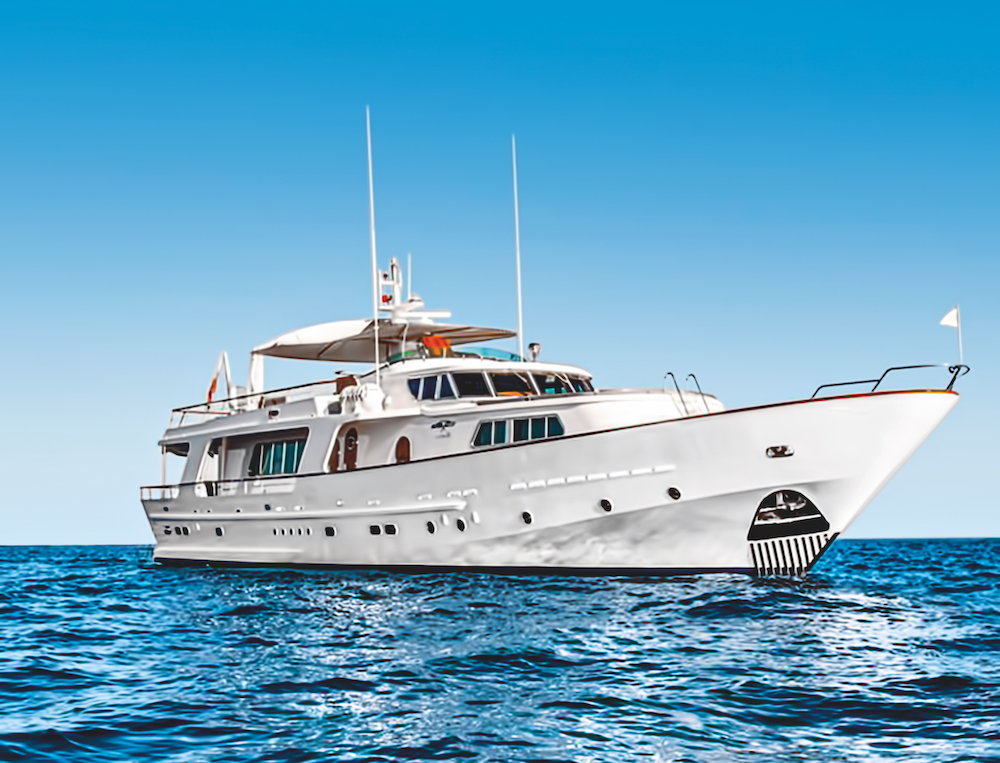
1973 – 1982
The 1970s are remembered for the meeting of Sanzio Nicolini with Carlo Riva of the yard that bears his name. Riva was looking for someone to build a series of large steel motoryachts, and CRN was the Italian leader in this field.

The partnership between the two yards led to the construction of two craft that have gone down in yacht history – Marco Polo, inspired by the SuperConero, and Vespucci. This is also when one of the distinctive features of all CRN yachts first made its appearance – their recognisability, an important factor in a market that was expanding rapidly and where a distinctive look was a crucial element in success. This process had already begun with the SuperConero line, which in the 1970s evolved to boast very well-defined lines.
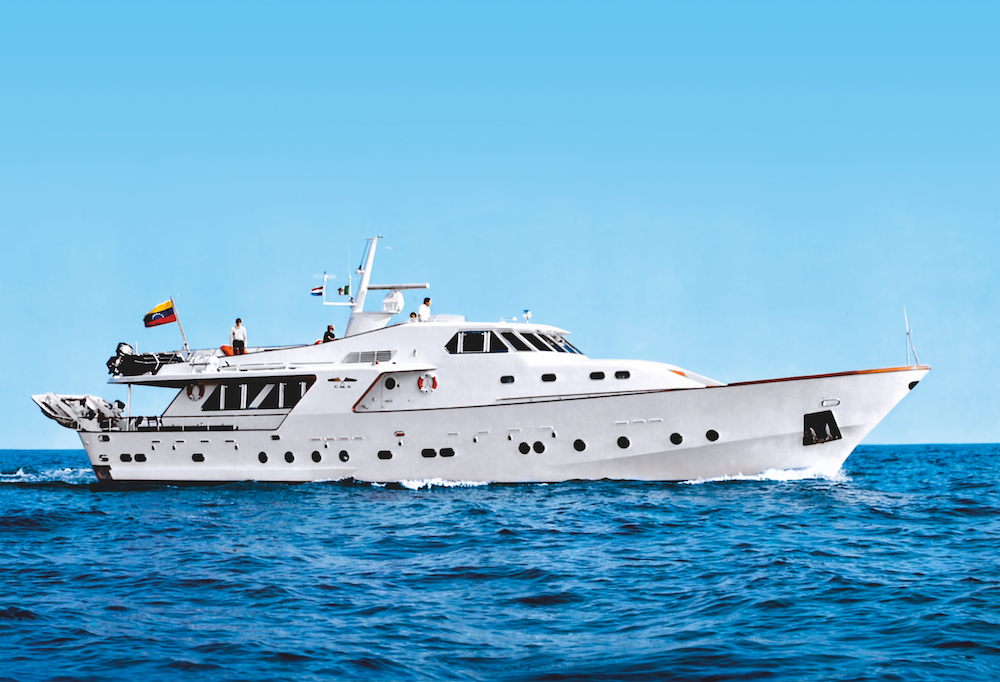
At this time all CRN yachts had an unusual bow chine, inspired by fishing boats and making them instantly recognisable. This bow shape was chosen for greater safety even in rough seas, and provided more space for the crew area, but it became the brand’s stylistic trademark. Some of the most famous yachts from these years are Varmar, a 32.40 metre designed by Jon Bannenber and launched in 1982, the 31-metre Gazzella of 1974, the 35-metre Moneikos of 1976, the Caribe III of 1979 and the Santa Cruz Ters, a 26-metre yacht from the same year.
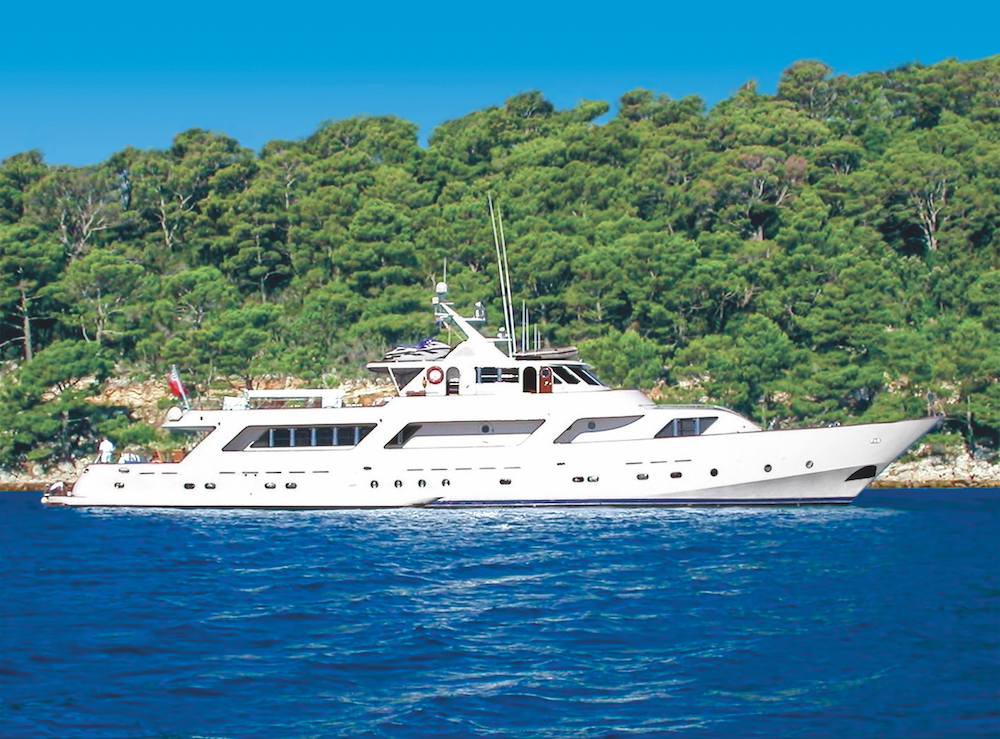
Not forgetting the 47-metre Awal, which was the first pleasure yacht to boast a touch-and-go helipad on the main deck. However, the yacht that made the biggest splash was the Fath Al Khair, a 47.2 metre launched in 1978 for the Emir of Quatar and created to his incredible specifications. It enabled CRN to demonstrate its ability to build large yachts and ushered in a period of growth in terms of size that would eventually result in today’s 85-metre designs.
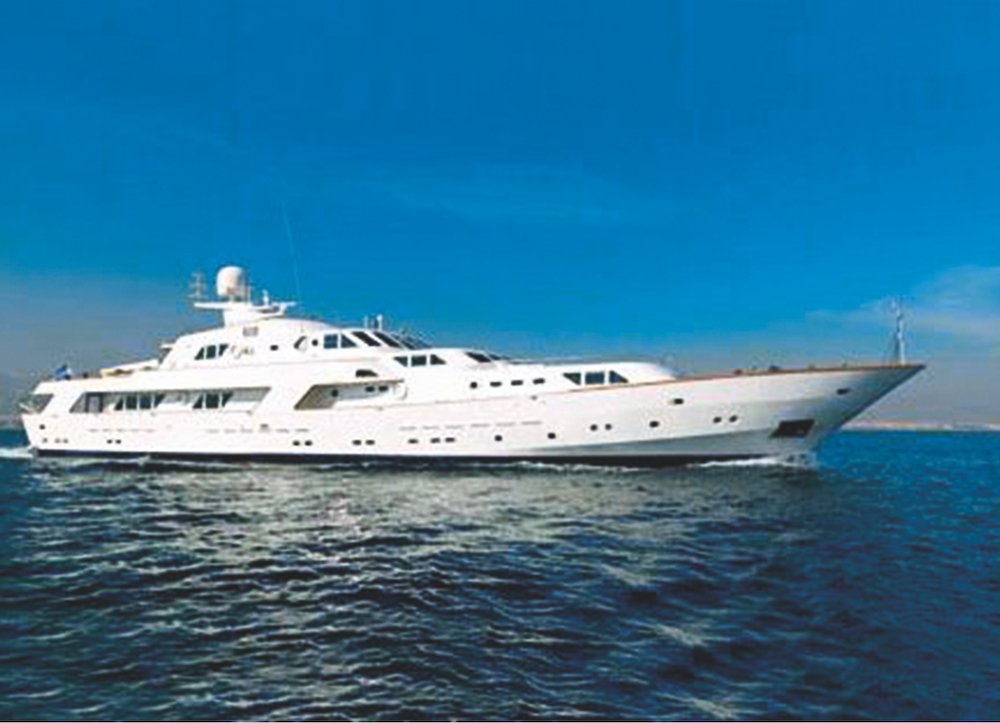
CRN 1983 – 1992
The 1980s were a key period for the yard. The sartorial aspect of CRN yachts took clear shape and the owner became the main player in the entire construction process. This was also the period of the collaboration with the Cantiere Morini (acquired in 2002), George Nicholson and great names in yacht design like Jon Bannenberg, Gerhard Gilgenast, Paola Smith, Terence Disdale, Dilday, Alberto Pinto and Aldo Cichero.
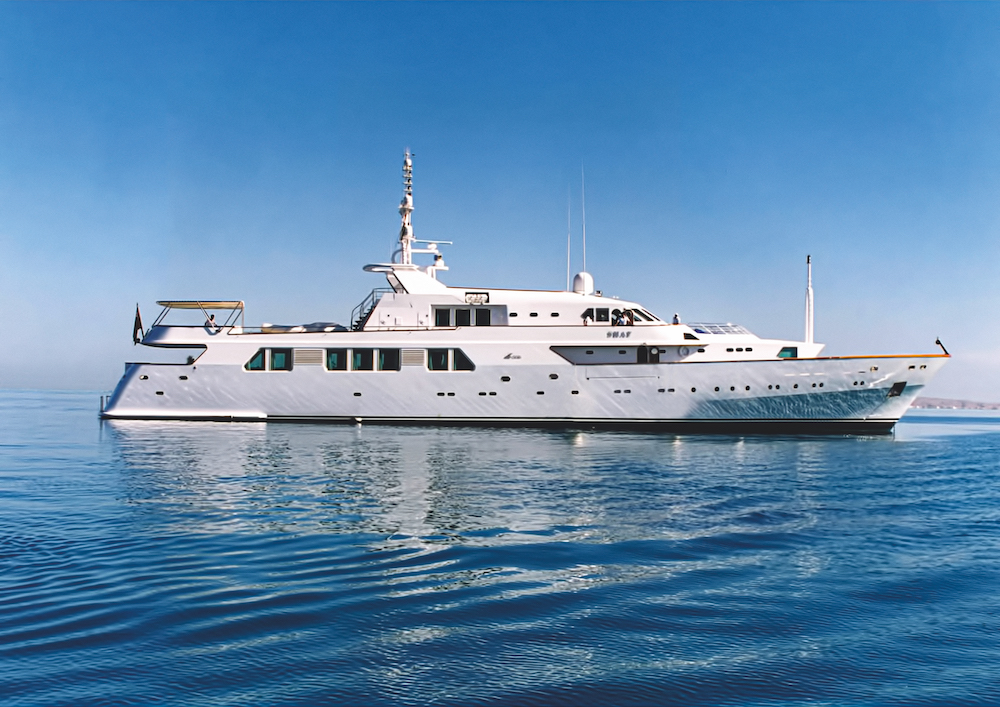
This was also, of course, when Gianni Agnelli’s F110 made its appearance, one of the craft that wrote yachting history. All this propelled CRN into the international spotlight, enabling the yard to win larger and larger contracts for bespoke yachts. The portfolio of 1980s masterpieces includes those designed by Jon Bannenberg – the 32.80-metre Vanina of 1986 and the 52.50-metre Akitou of 1983 that set a new length record for CRN, plus, of course, Vagabondo, the 61,2 metre of 1986 penned by Terence Disdale.
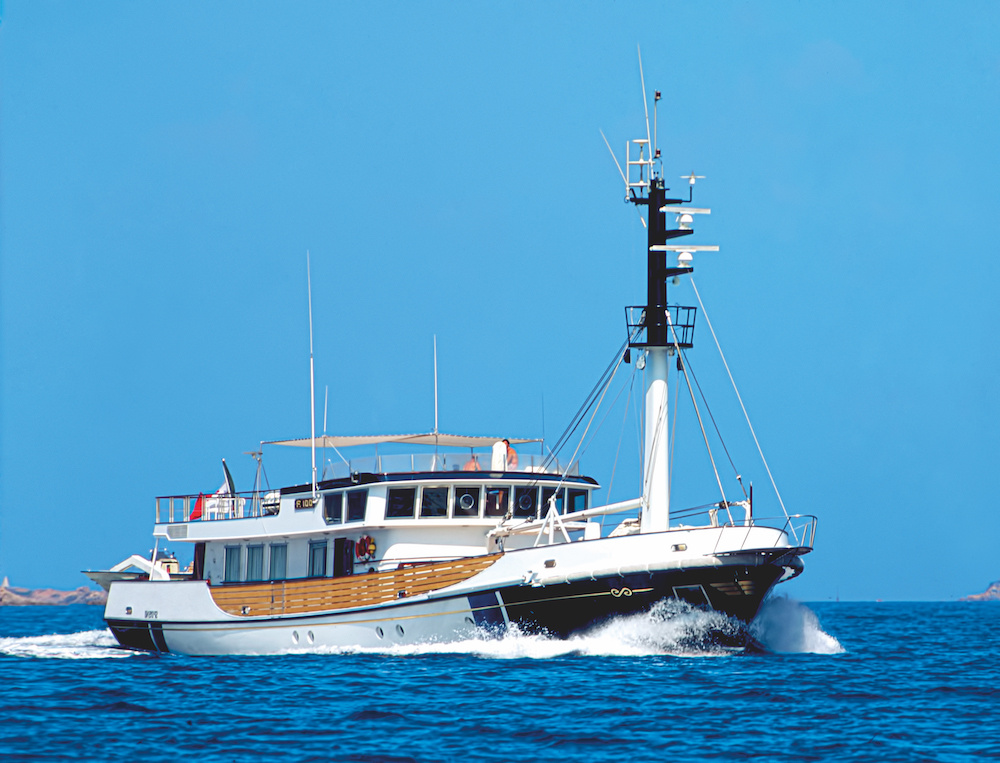
But the key year of the decade was 1983, with the launch of the F100. Commissioned by Gianni Agnelli, this yacht can be regarded as the forerunner of the Explorer that are so on-trend at the moment. The F100 was remarkable not only for the identity of its owner but also its futuristic systems and equipment. The 32.8-metre craft, designed by Gerhard Gilgenast, had a minimal look, its only flourish a pure gold beauty line running from bow to stern beneath the rubbing strake.
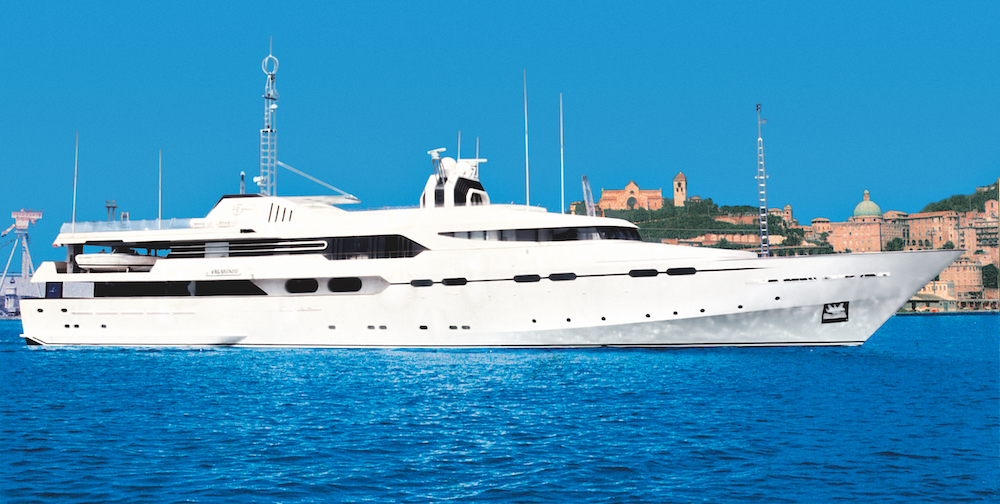
It was designed for extended cruising in all weather conditions and at all latitudes, its clean lines concealing a technological heart that opened the way to a long series of innovative developments in the yacht-building industry. It was the first yacht to feature floating rubber supports to eliminate noise, the first 33-metre to boast a heliport and the first yacht with anti-vibration tiles to dampen engine vibration. In short, a masterpiece of naval engineering that CRN created in collaboration with a team of experts from NASA.
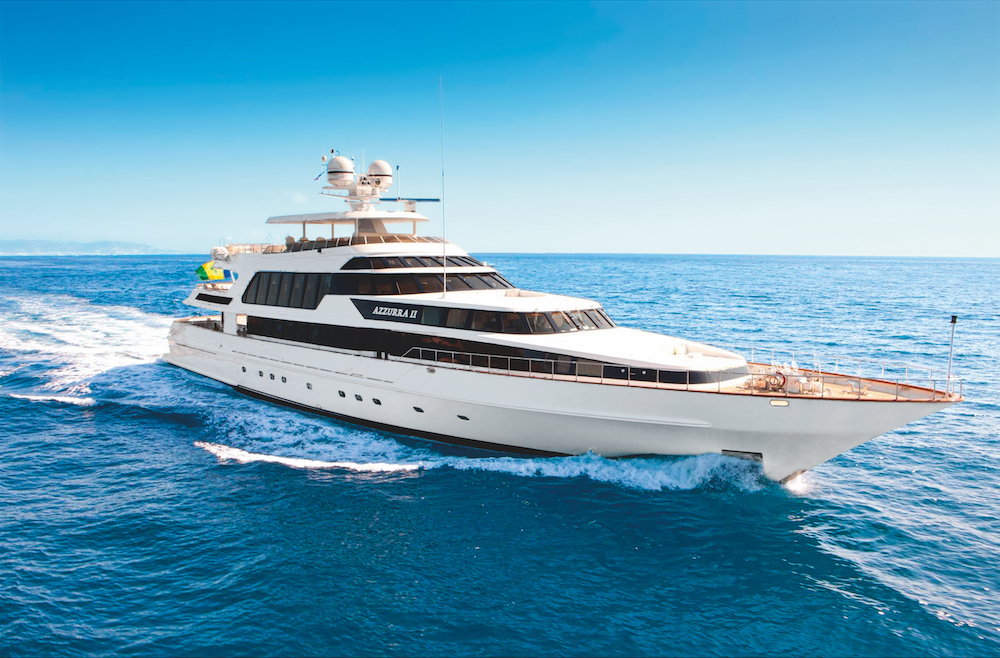
1993 – 2002
The Gulf War had profound repercussions in the early 1990s, especially for companies like CRN that had many clients in the eastern Mediterranean. The yard decided to leverage its know-how and diversify, expanding its operations into refitting and commercial products. Its yachts grew larger and it began to offer enhanced client care.
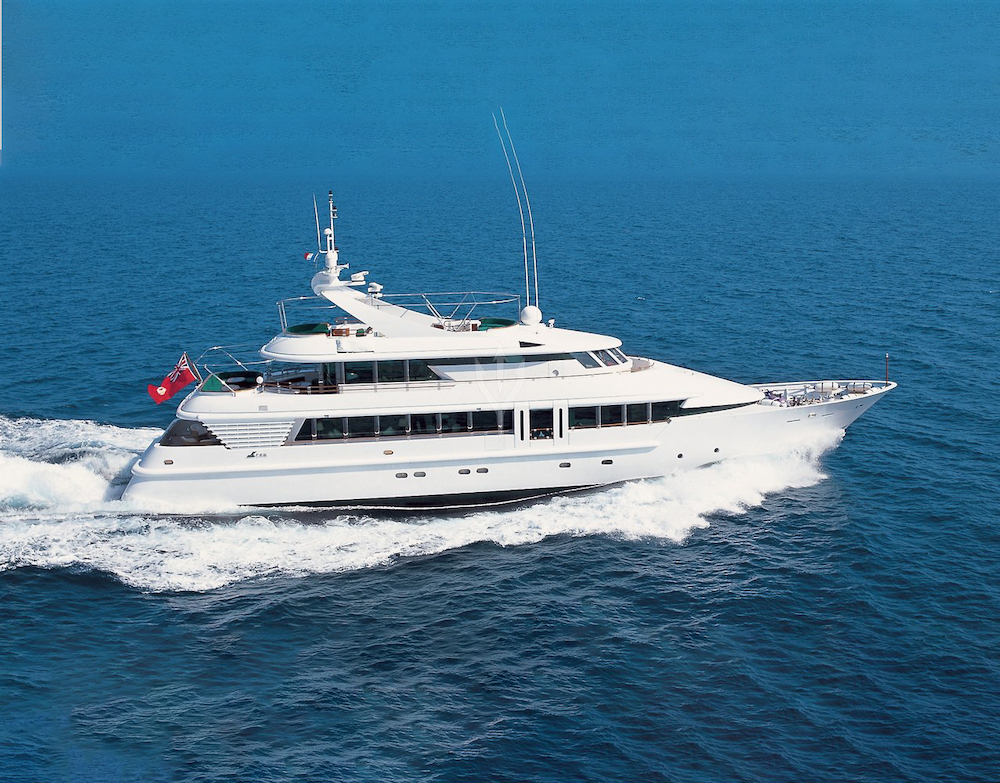
And at a time when series yacht production was increasing, CRN yachts became thoroughbred bespoke objects. This is the period of the collaboration with Walter Franchini – together with the yard he designed the lovely Aqualibrum, the 40-metre craft from 1994. Working with Terence Disdale led to the 65-metre Awal II, which set a new length record, and the 50-metre Sahab IV, for which he designed the interiors.
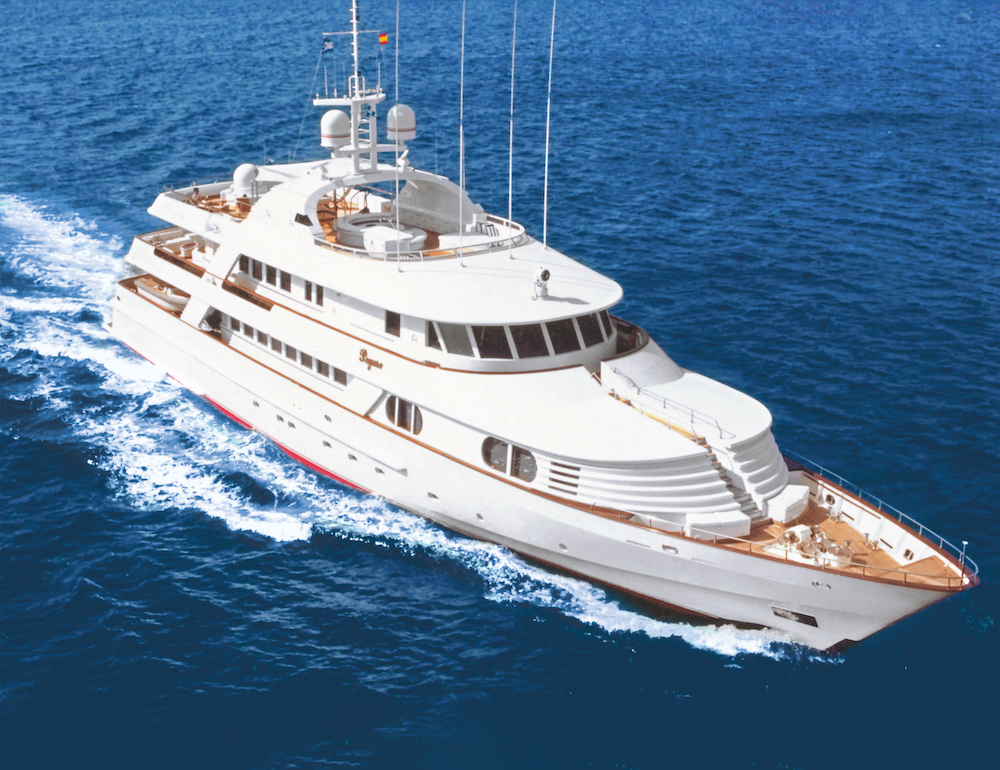
The 50-metre Pestifer and the 60-metre Numptia – with its famous round stern, Numptia became a bespoke yacht icon- The three had all interiors by François Zuretti. Numptia was also constructed at a time of a transformation that would shape CRN’s destiny. In 1999 the yard joined the Ferretti Group, which became one of the main international players in pleasure yacht design and construction, adding to a roster of well-known names that included Custom Line, Ferretti Yachts, Riva, Pershing, Itama and Mochi, with Wally being added in Wally nel 2019.
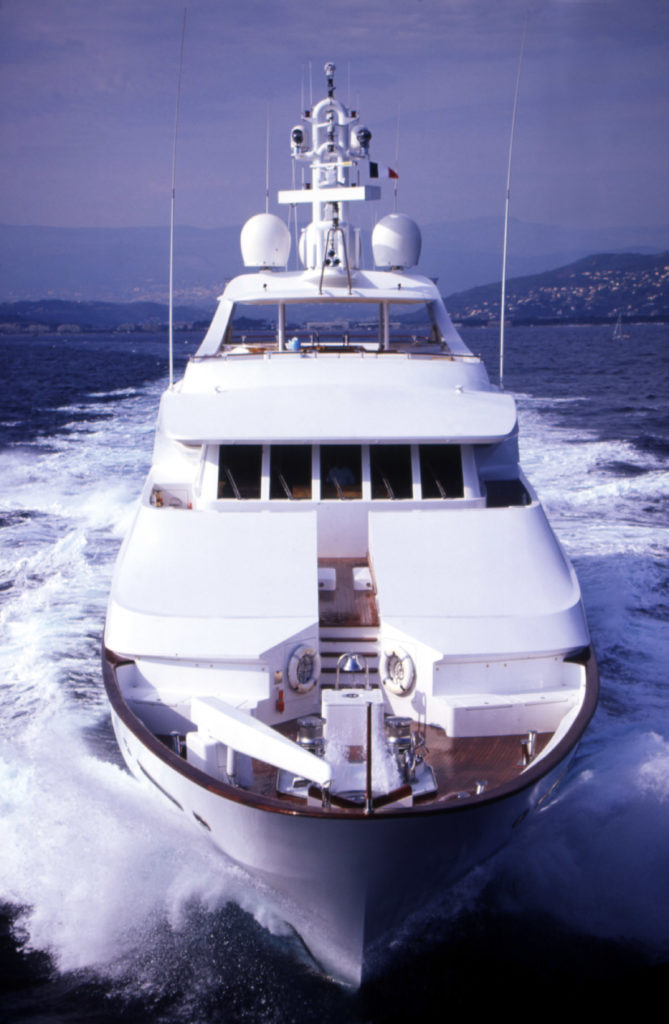
The CRN yard was the missing piece of the puzzle, completing the group’s profile and enhancing its versatility. In 2001 CRN and Custom Line created the maritime hub for Ferretti Group super and megayachts in Ancona. This became the location for the construction of CRN’s steel and aluminium yachts and the entire composite range of CRN as well as the Custom Line models.
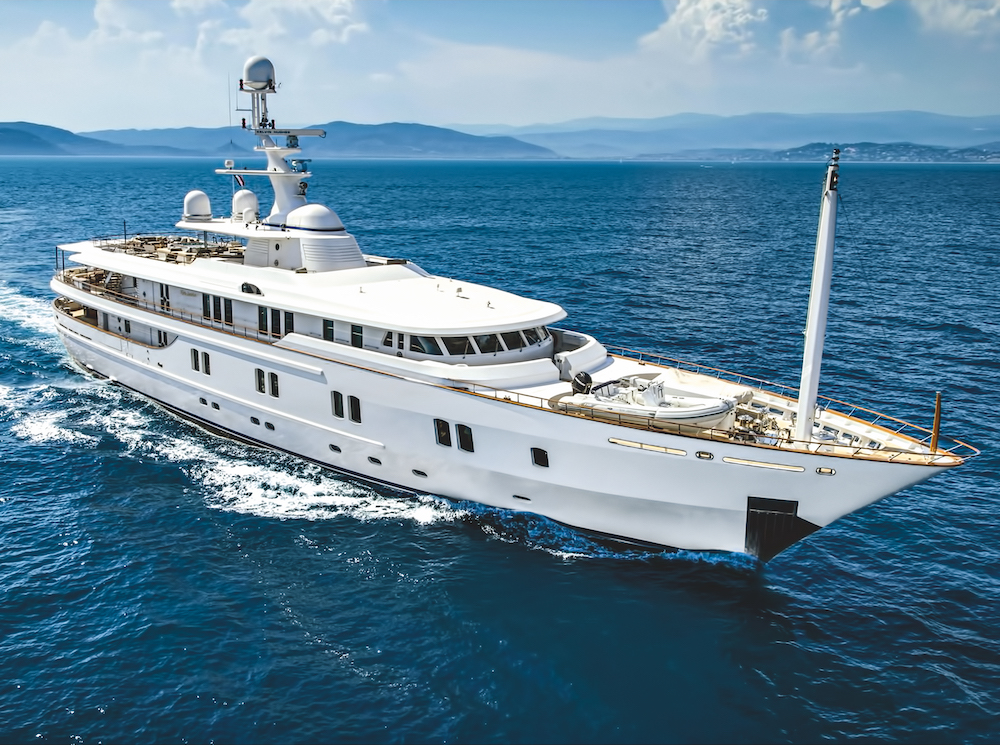
The first yacht of the new era was Magnifica, a 43-metre by Nuvolari Lenard. The following year saw the acquisition of Cantiere Navale Morini. The yard brought significant added value to CRN and the addition of its premises meant that the superyacht hub now covered a total of 80,000 square metres.
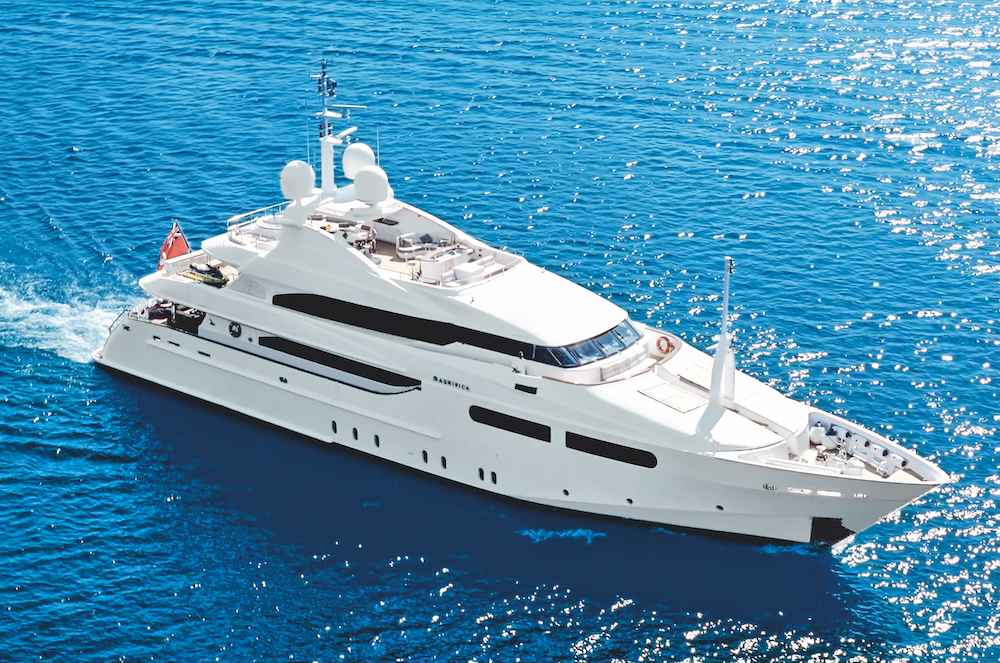
CRN 2003 – 2012
The increase in size of the production hub created by the acquisition of Cantiere Morini led to a proportional rise in CRN’s production and fame, with five launches in the space of a year. Kooilust Mare and Saramour were launched in 2003 and 2005.
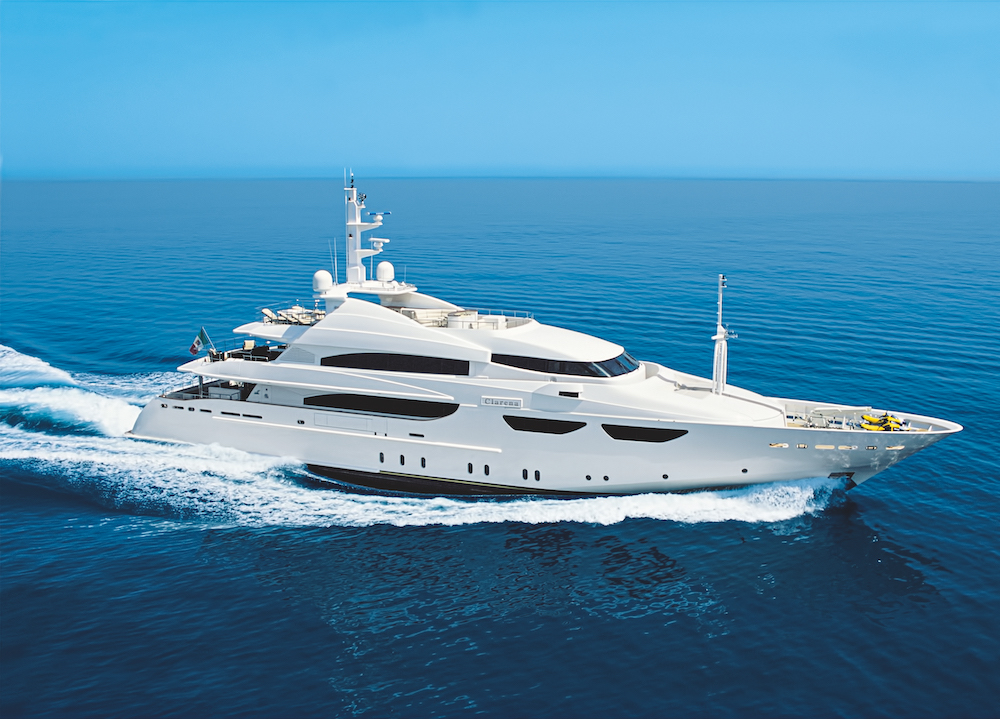
This pair of 43-metre yachts designed by Nuvolari Lenard marked an important stage in the CRN story – although they were bespoke yachts they used the same naval platform as Magnifica, which provided inspiration for them both. This not insignificant detail revolutionised the entire production process.
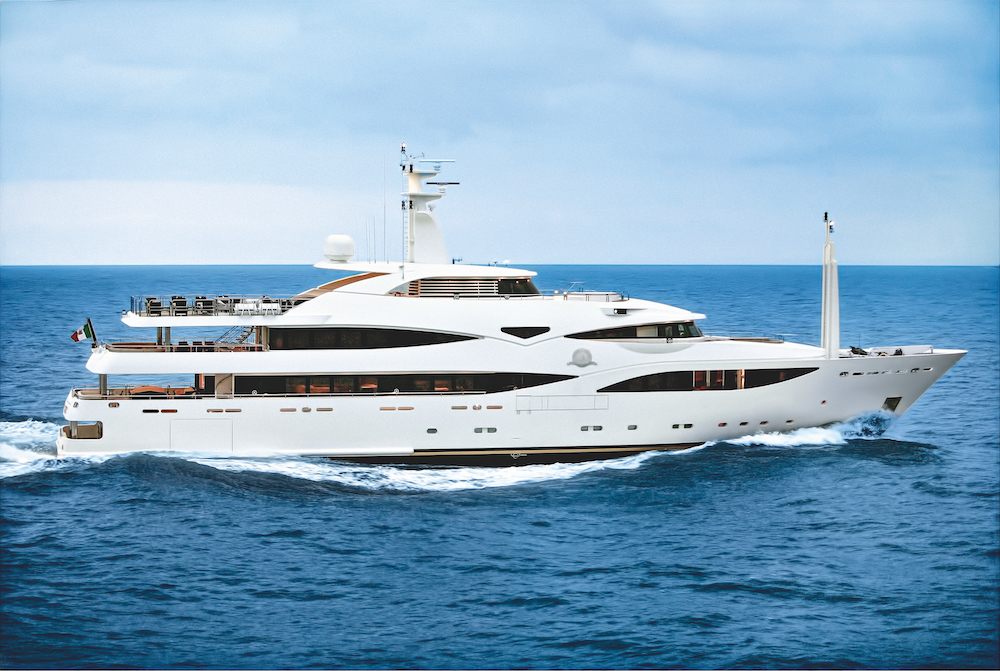
Using existing platforms provides construction flexibility, facilitates work planning and has a decisive impact on production, testing and delivery times, as well as offering owners a more reliable structure. This period also marked the launch of the collaboration with Zuccon International Project, which designed the 54-metre Ability from 2004, the first with the open stern.
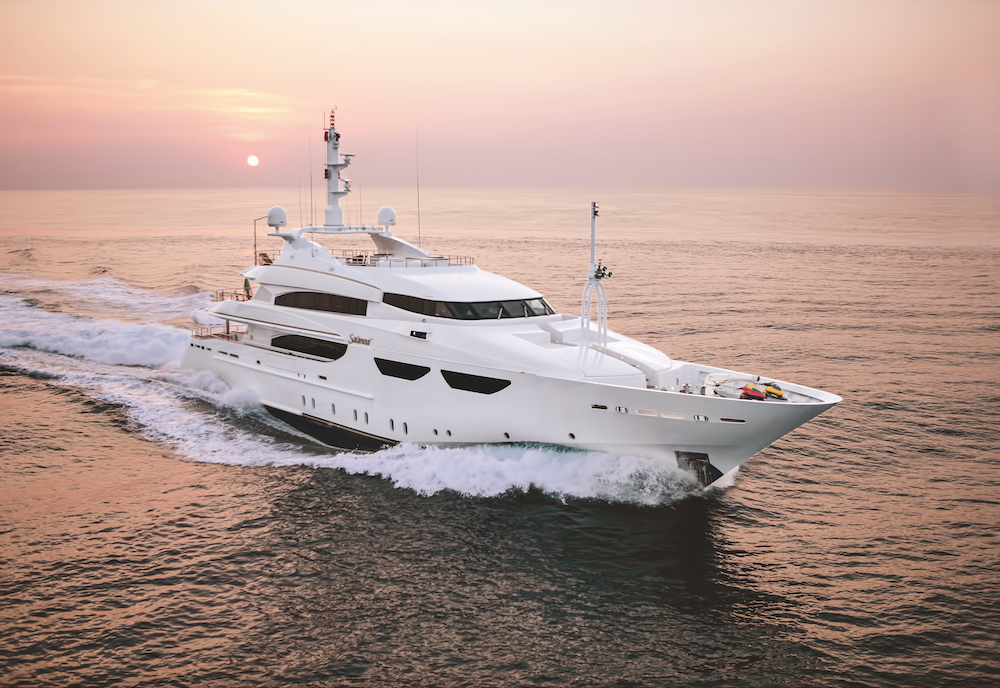
Laid out over five decks, it has vertical windows and an imposing presence that was to become the CRN brand’s calling card. Less than a year later came Maraya, the 54-metre that set another record as the first yacht to have opening terraces overlooking the sea.
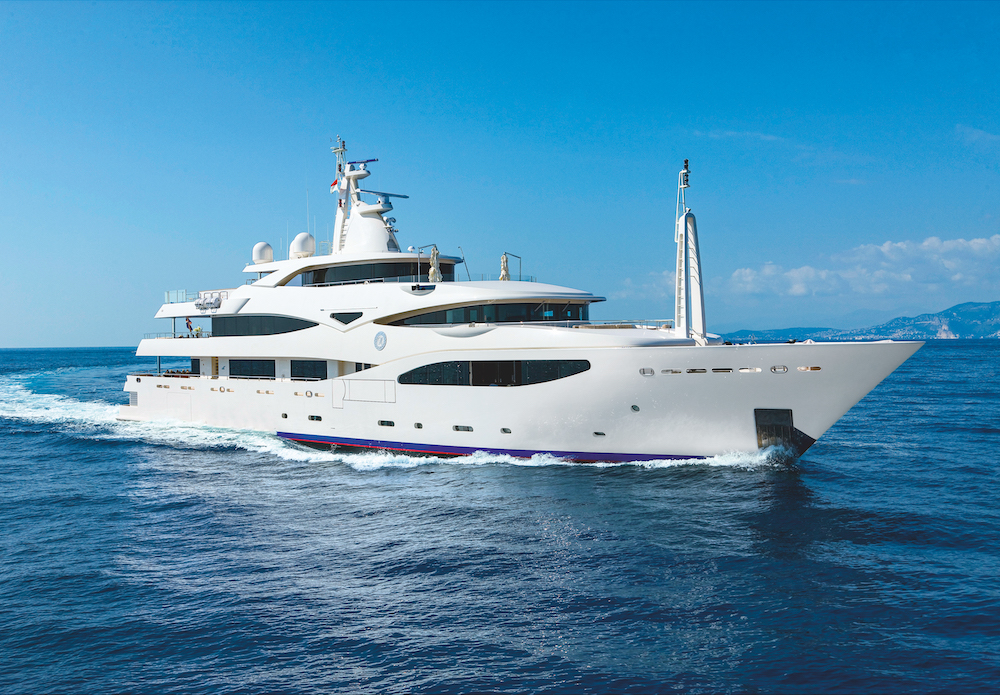
The collaboration with Rome-based studio resulted in the construction of six more craft that have come to be regarded as yacht-building masterpieces of the noughties, the 60-metre Givi, the 57-metre Romance, the 60-metre Tacanuyaso, Blue Eyes, which introduced the era of the beach club, Mimtee and Darling Danama, the first yacht to feature an active noise-abatement system.
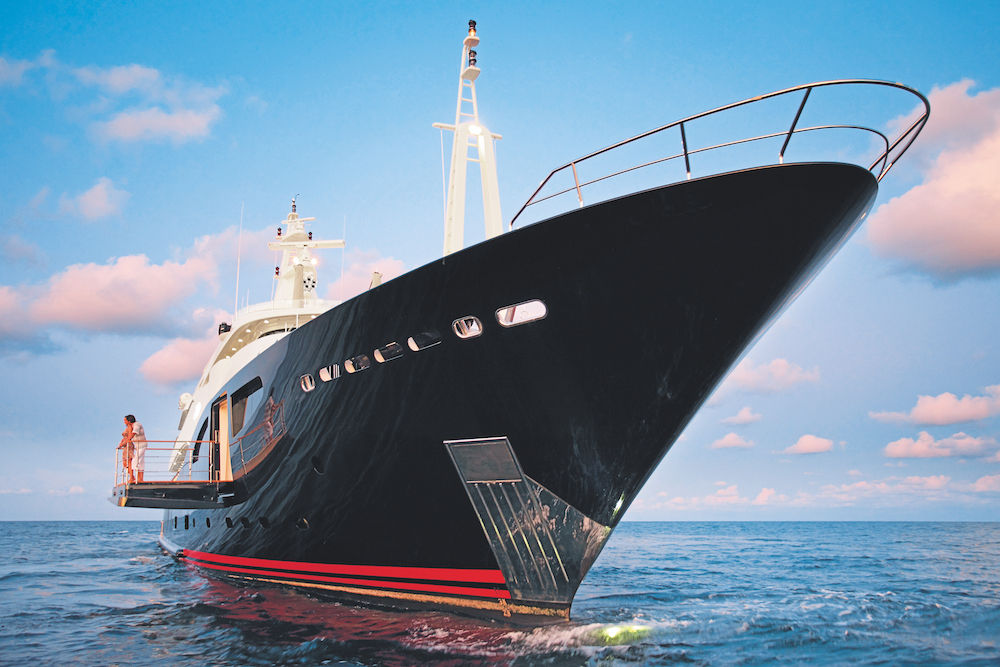
Five large craft in less than four years, proof of the success of the naval platform system. In 2010 a new length record was set with the launch of the 72-metre Azteca designed by Nuvolari Lenard. As well as seeing growth in yacht lengths, this decade was marked by two more interesting developments – the first was the launch of construction on thirteen composite, six 40-metre CRN 128s and seven 43-metre CRN Navettes. The second important event the Ferretti Group’s acquisition by SHIG-Weichai group.

2013 – 2023
The first large yacht after the SHIG-Weichai Group’s entry as majority shareholder was J’Ade, a 60-metre yacht designed by Zuccon International Project. It features cutting edge design and a revolutionary extendable garage, something never seen before on a 60-metre model. A technical space on board this model has been entirely redesigned to become an unusual living area.
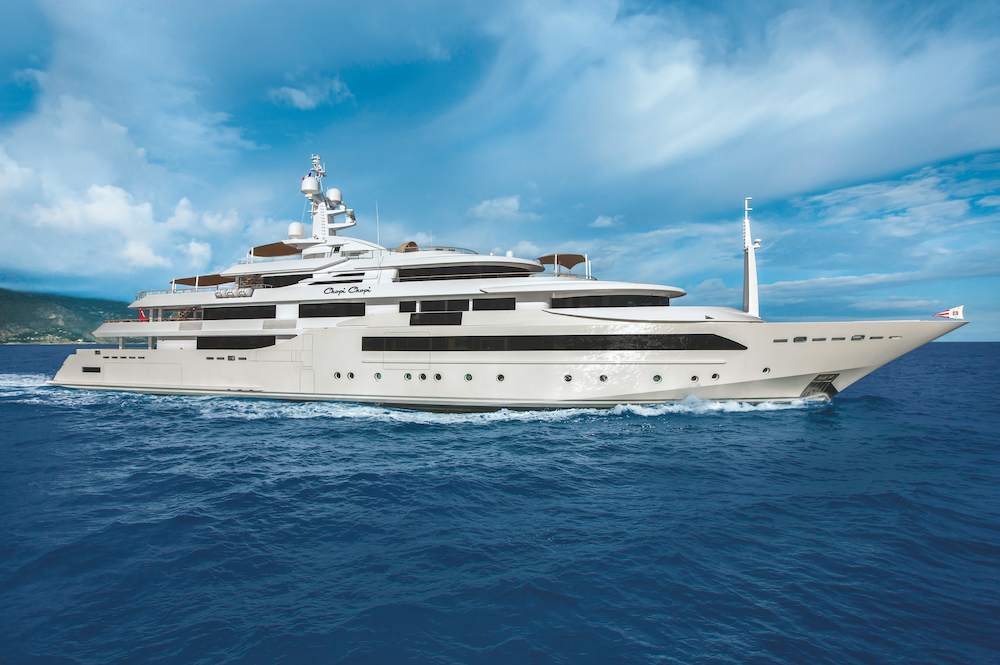
In 2013 it was the turn of the 80-metre Chopi Chopi, the yard’s flagship. For the first time it offered on board the MyConcierge staff call system.
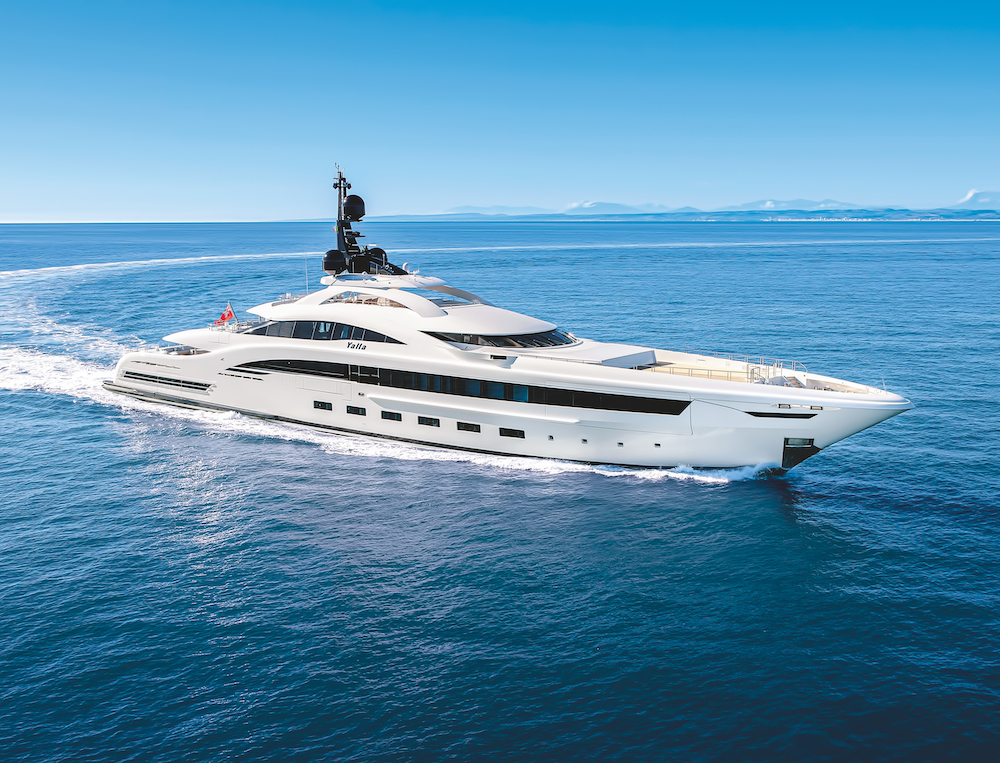
Managed in a simple, immediate way through iPads it makes it possible to interact directly with crew members and access a wide menu of services. Both craft embody CRN’s design and construction excellence and the yard’s ability to build genuinely custom projects.
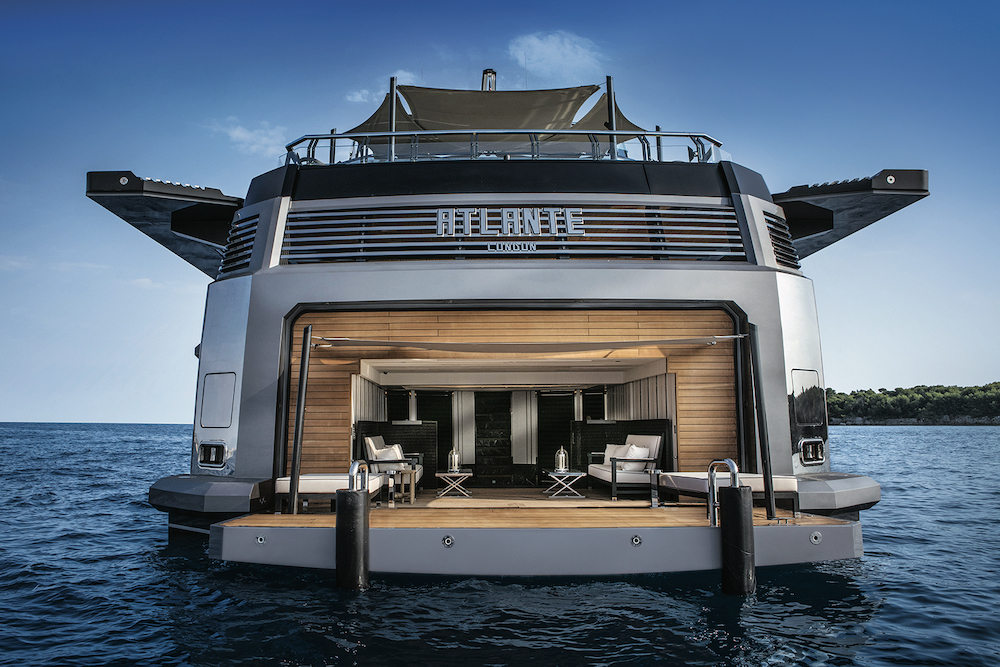
A year later in 2014 two more designs marked the beginning of CRN’s contemporary story – the first was the 60-metre Saramour, a yacht that can best be described as a floating art gallery, designed by Francesco Paszkowski.
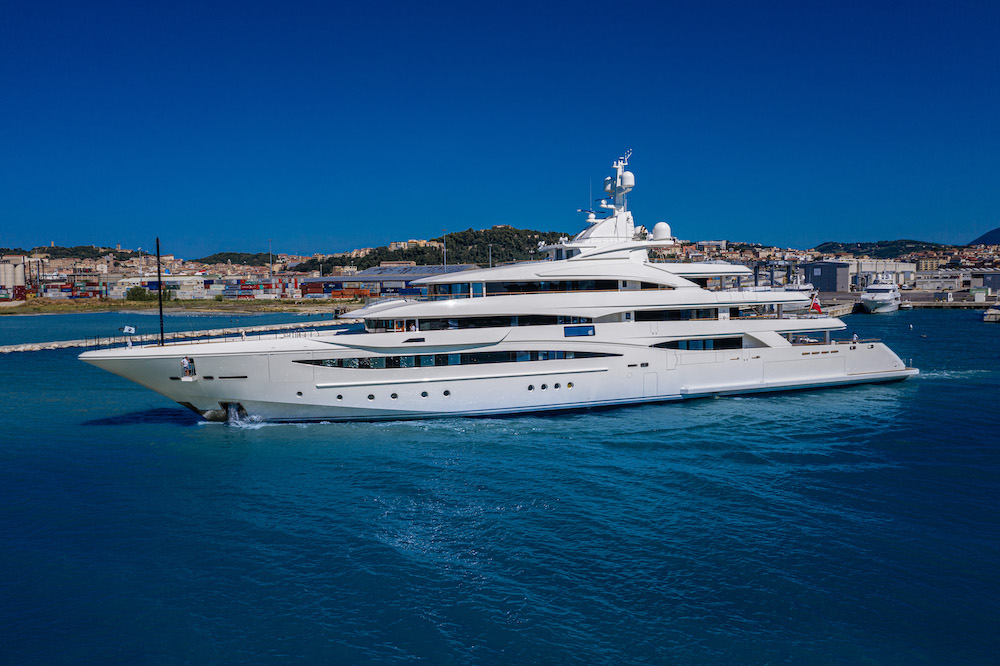
The interiors, to showcase works of art from the owner’s collection. The 73-metre Yalla from 2014, on the other hand, launched a collaboration with Omega Architects and was the first vessel to be built on the new 12.5-metre beam naval platform.
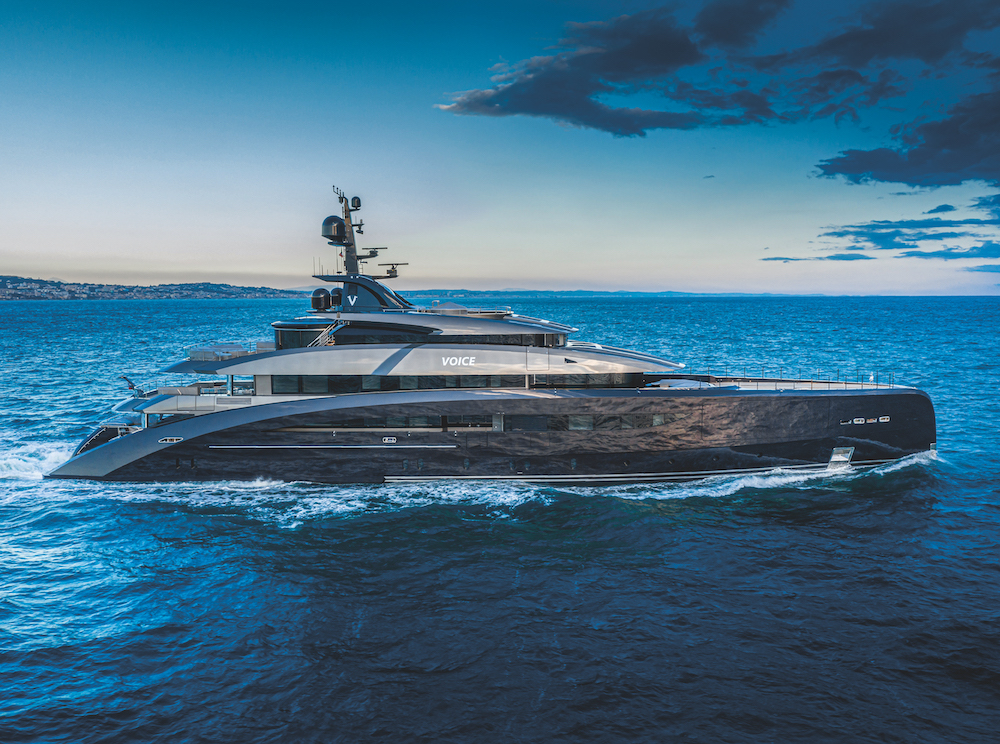
The following year saw the launch of the Atlante, a 55-metre model by Nuvolari Lenard that re-invented the layout concept. The main deck, in fact, is a versatile open area that can be transformed from tender garage into a lounge.
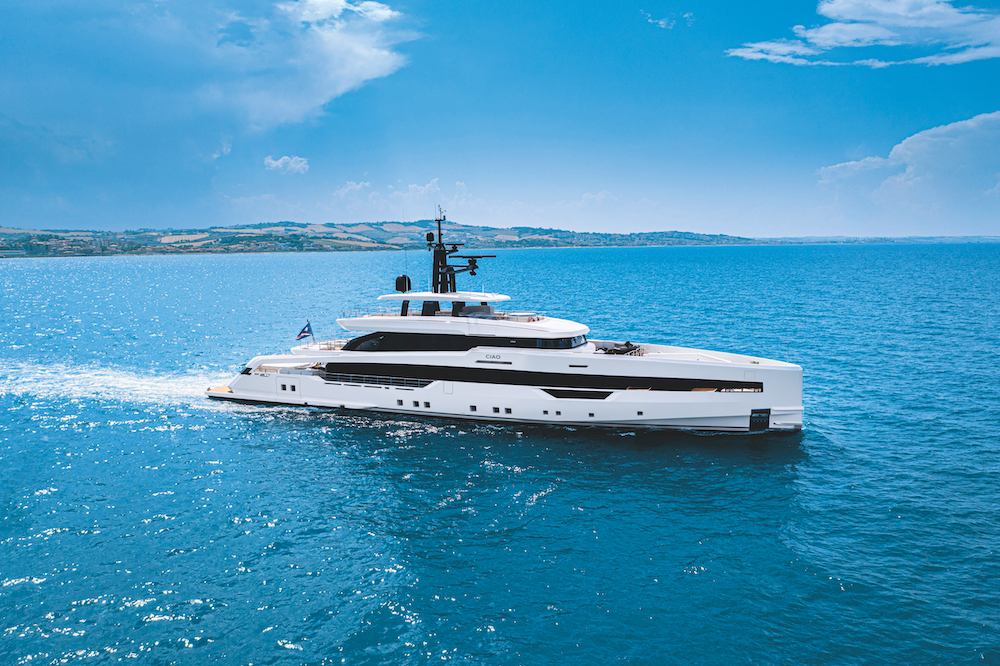
The yachts launched in the ensuing years trace the recent story of the CRN yard – Cloud 9, a 74-metre with interiors by Andrew Winch and Latona, a 50-metre by the Zuccon International Project, which like the 79-metre Mimtee, with interiors by Laura Sessa, threatened to rob Chopi Chopi of its flagship status.
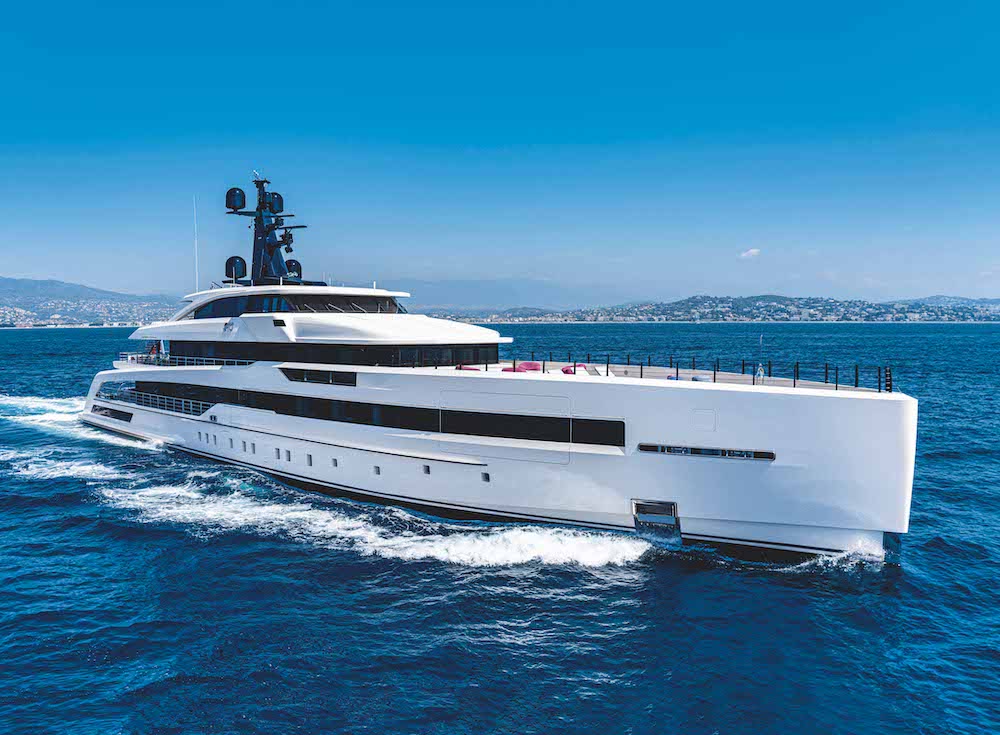
Plus, of course, Voice, Rio and Ciao, all of which provide clear evidencxe of CRN’s expertise and reveal glimpses of a future combining sustainability, far-sightedness and setting new trends.
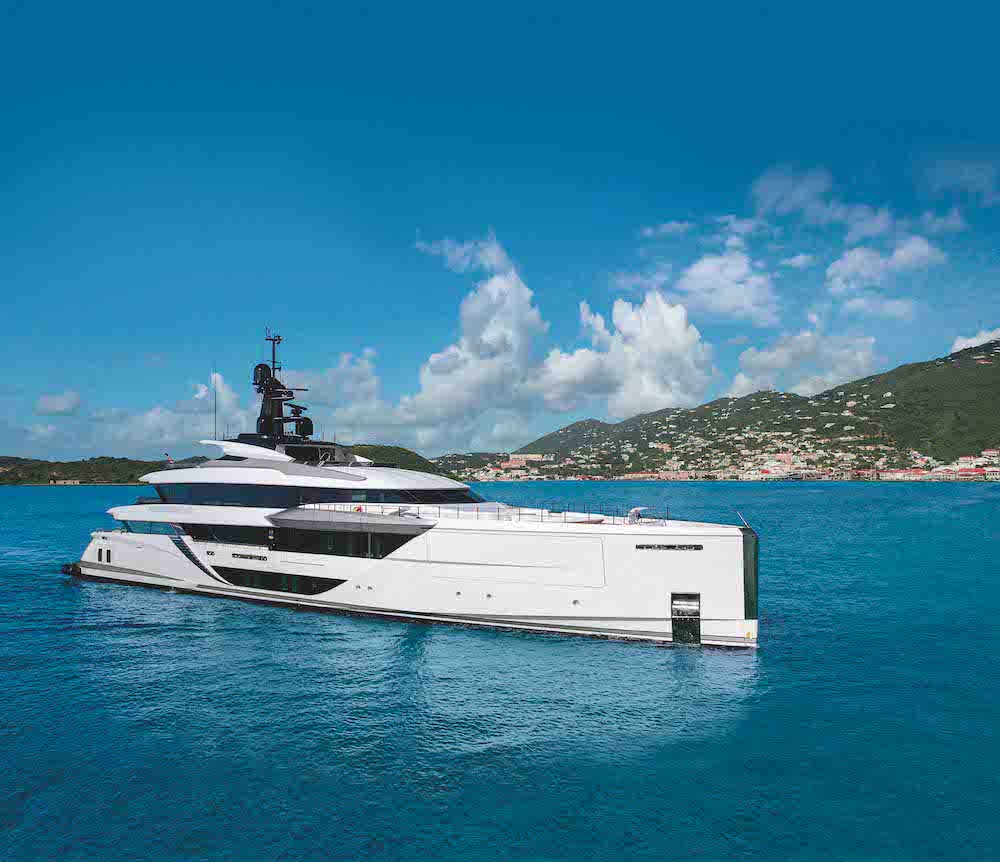
giuliana fratnik



